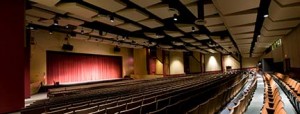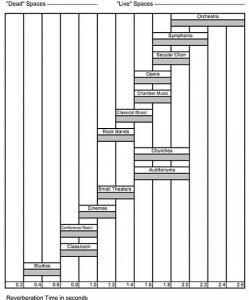 By Aimee Sanford
By Aimee Sanford
Few elements of a worship service can move a congregation — and drive home the intended message — like the delivery of inspiring, authentic, quality music.
This isn’t an unfamiliar idea to church leaders and integrators specializing in worship spaces. The A/V industry is full of ideas on how to improve audio output with the newest electrical components, including speakers, mics and mixers.
But what if it’s all used in vain? What if poor room acoustics are the real problem?
Design hurdles to look out for
Although better-quality equipment can produce cleaner audio, less-than-optimal room acoustics might ruin what an expensive system achieves —before it even reaches worshippers’ ears. Even the newer-style, open worship facilities we know and love are a legacy design passed down to us from a time when choir music was common and electronic amplification equipment wasn’t available. At that time, the room was the amplifier. So, when speakers are playing in a worship space that’s choir-friendly by design, you’re unintentionally reducing the clarity of contemporary music.
RELATED RESOURCES:
A few architectural design features can muddle your music:
Flat, hard or bare surfaces (glass and sheetrock). Sound clarity’s enemy is a long RT60, or reverberation time — the amount of time it takes for sound energy from a single source to dissipate. The harder and flatter the surface area, and the more room volume to contend with, the longer sound energy bounces around a room before decaying.
High ceilings, raised ceilings and increased room volume. This goes back to those cherished old cathedrals from hundreds of years ago. Back then, without electronic amplification, these ceilings allowed a small choir or instruments to be heard throughout a large room. Today, rooms amplify and reverberate music from speakers, creating sonic clutter that reduces sound system fidelity.
Walls or floors and ceilings that are parallel to one another. Common acoustical issues (including standing waves, slap back and flutter-echoes) are directly dependent on the reflection of sound energy. A sound source between two parallel surfaces radiates sound at a specific frequency. The wavelength strikes one surface and is reflected back towards the noise source, going past it and then striking the opposite surface where it’s again reflected back towards the noise source. This sound energy is bouncing back and forth between the parallel walls like a ping-pong ball. In music, it can produce a perception of a pitch, or timbre coloration, and cause a reduction in the room’s audio intelligibility.
 How to test your space’s RT60
How to test your space’s RT60
Ideal reverberation times for worship spaces are between 1.4 and 2 seconds. This is enough to keep music sounding full and “live,” but not enough to distort the sound.
For more intimate spaces, the ideal RT60 is lower. For large orchestra halls that don’t use speakers, the ideal RT60 is higher. Each facility has a RT60 “sweet spot” that depends on its size and purpose.
You can hire an acoustical engineer to find the RT60 of your space. But, if this isn’t in the budget, plenty of mobile apps and free software can provide a decent estimate.
Or, if you’re just trying to get a very rough estimate or starting point, go old school: Stand in the center of your space when it’s empty, and clap or slap two blocks of wood together. Count the number of seconds until the room is completely silent again. Do this multiple times, at different spots in the room, to get the average. If it’s more than two seconds, your space might need an acoustical facelift.
How to lower reverb time
Adding materials that absorb reflective sound energy will lower a space’s RT60. The most common sound-absorbing material used in worship spaces is one- or two-inch-thick fabric-wrapped acoustical wall panels. Conscious of the aesthetic preservation desired by many church leaders, these acoustical treatments are now available in a variety of sizes, shapes and colors to blend in to a worship space — or stand out, if that’s preferable.
Aimee Sanford is a communications specialist at Acoustical Solutions, Inc.



Worship spaces have multiple acoustical requirements, and it is virtually impossible to meet all of the requirements. The primary purpose of worship spaces is worship – and that typically means that a sermon is clearly intelligible throughout the worship space. After that, it depends on the most common type of music – amplified, choral and/or organ. All have different acoustic requirements, and RT60 is only one measurement. And the optimal RT60 is dependent on the room volume.
The article is correct that the room acoustics should work with the audio system. The best way to do this is to have a qualified acoustician and a qualified audio system expert work together, AFTER the congregation has prioritized acoustical requirements.